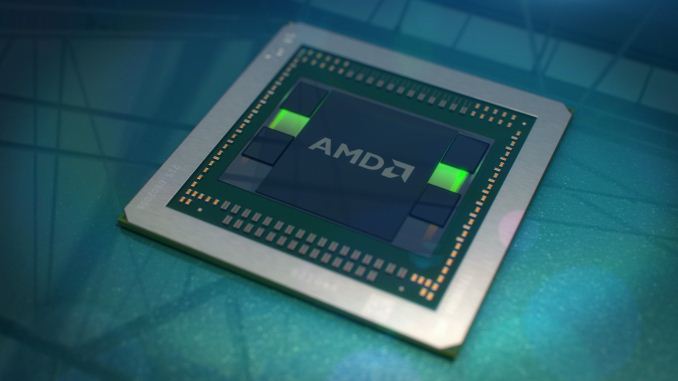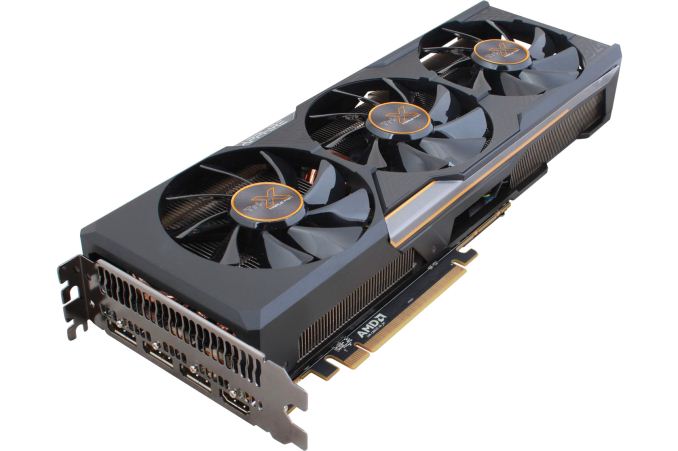The AMD Radeon R9 Fury Review, Feat. Sapphire & ASUS
by Ryan Smith on July 10, 2015 9:00 AM ESTFinal Words
Bringing this video card review to a close, we’ll start off with how the R9 Fury compares to its bigger sibling, the R9 Fury X. Although looking at the bare specifications of the two cards would suggest they’d be fairly far apart in performance, this is not what we have found. Between 4K and 1440p the R9 Fury’s performance deficit is only 7-8%, noticeably less than what we’d expect given the number of disabled CUs.
In fact a significant amount of the performance gap appears to be from the reduction in clockspeed, and not the number of CUs. And while overclocking back to R9 Fury X clockspeeds can’t recover all of the performance, it recovers a lot of it. This implies that Fiji on the whole is overweight on shading/texturing resources, as it’s not greatly impacted by having some of those resources cut off.
Consequently I can see why AMD opted to launch the R9 Fury X and R9 Fury separately, and to withhold the latter’s specifications until now, as this level of performance makes R9 Fury a bit of a spoiler for R9 Fury X. 7-8% makes R9 Fury notably slower than R9 Fury X, but it’s also $100 cheaper, or to turn this argument on its head, the last 10% or so that the R9 Fury X offers comes at quite the price premium. This arguably makes the R9 Fury the better value, and not that we’re complaining, but it does put AMD in an awkward spot.
As for the competition, that’s a bit more of a mixed bag. R9 Fury X had to compete with GTX 980 Ti but couldn’t surpass it, which hurt it and make the GTX the safer buy. On the other hand R9 Fury needs to compete with just the older GTX 980, and while it’s by no means a clean sweep for AMD, it’s a good outcome for AMD. The R9 Fury offers between 8% and 17% better performance than the GTX 980, depending on if we’re looking at 1440p or 4K. I don’t believe the R9 Fury is a great 4K card – if you really want 4K, you really need more rendering power at this time – but even at 1440p this is a solid performance lead.
Along with a performance advantage, the GTX 980 is also better competition for the R9 Fury (and Fiji in general) since the GTX 980 is only available with 4GB of VRAM. This negates the Fiji GPU’s 4GB HBM limit, which is one of the things that held back the R9 Fury X against the GTX 980 Ti. As a result there are fewer factors to consider, and in a straight-up performance shootout with the GTX 980 the R9 Fury is 10% more expensive for 8%+ better performance. This doesn’t make either card a notably better value, but makes the R9 Fury a very reasonable alternative to the GTX 980 on a price/performance basis.
The one area where the R9 Fury struggles however is power efficiency. GTX 980’s power efficiency is practically legendary at this point; R9 Fury’s is not. Even the lower power of our two R9 Fury cards, the ASUS STRIX, can’t come close to GTX 980’s efficiency. And that’s really all there is to that. If energy efficiency doesn’t matter to you then the R9 Fury’s performance is competitive, otherwise GTX 980 is a bit slower, a bit cheaper, and uses a lot less power. That said, AMD’s partners do deserve some credit for keeping their acoustics well under control despite the high power and heat load. It’s not an apples-to-apples comparison against the reference GTX 980 and its blower, but at the very least picking R9 Fury over GTX 980 doesn’t mean you have to pick a loud card as well.
And that brings us to the third aspect of this review, which is comparing the R9 Fury cards from Sapphire and ASUS. Both partners have come to the plate with some very good open air cooled designs, and while it’s a bit unusual for AMD to launch with so few partners, what those partners have put together certainly paint R9 Fury in a positive light.
Picking between the two ends up being a harder task than we expected, in part because of how different they are at times. From a performance perspective the two cards offer very similar performance, with Sapphire’s mild factory overclock giving them only the slightest of edges, which is more or less what we expected.
However the power and acoustics situation is very different. On its own the ASUS STRIX’s acoustics would look good, but compared to the Sapphire Tri-X’s deliciously absurd acoustics it’s the clear runner-up. On the other hand the ASUS card has a clear power efficiency advantage of its own, but I’m not convinced that this isn’t just a byproduct of the ASUS card randomly receiving a better chip. As a result I’m not convinced that this same efficiency advantage exists between all ASUS and Sapphire cards; ASUS’s higher voltage R9 Fury chips have to go somewhere.
In any case, both are solid cards, but if we have to issue a recommendation then it’s hard to argue with the Sapphire Tri-X’s pricing and acoustics right now. It’s the quietest of the R9 Fury cards, and it’s slightly cheaper as well. Otherwise ASUS’s strengths lie more on their included software and their reputation for support than in their outright performance in our benchmark suite.
And with that, we wrap up our review of the second product in AMD’s four Fiji launches. The R9 Fury was the last product with a scheduled launch date, however AMD has previously told us that the R9 Nano will launch this summer, meaning we should expect it in the next couple of months. With a focus on size and efficiency the R9 Nano should be a very different card from the R9 Fury and R9 Fury X, which makes us curious to see just what AMD can pull off when optimizing for efficiency over absolute performance. But that will be a question for another day.












288 Comments
View All Comments
CiccioB - Monday, July 13, 2015 - link
If you still can't understand numbers but only can understand bar colors, I can sum up things for you for the same game (Crysys 3) also for the techpowerup review at 2560x1440 (the resolution for this kind of cards):At 780Ti presentation (nov 2013)
780ti 27
290X 26.3
At Fuxy X presentation (so, last week):
780ti 29.3
290X 29.4
So the 290X passed from -0.7fps to +0.1fps... WOW! That is a miracle!!!!!
Only a fanboy should think about that, or one that does not understand benchmarks numbers, can't interpret them and can only see bar length/relative positions.
You see a similar trend with Battlefield 3, where the 290X from -3fps became -0.3fps. And both cards have raised their FPS.
So, yes, AMD recovered a fraction of nothing and nvidia didn't crippled anything.
You have also not noted that in the meantime AMD changed the 290X policy on BIOS and custom, so all cards have become "uber" and better custom radiators allowed the card not to be throttled. So the advantage of this performance is reserved for those that have bought these cards, not for those that have bought the "not sampled" reference ones (can you remember the issue about those cards in retail market that have quite different performances with respect to those send to reviewers?). Yes, another miracle...
These are the MYTH I like reading about that only fanboy can sustain. These are the type of arguments that let you clearly spot a fanboy in the group.
CiccioB - Wednesday, July 15, 2015 - link
So, where are the facts sustaining your myth? I can't see them and it seems you can't provide them either.Yes, 780Ti a crappy investment... it was good the 290X with stuttering all over the place that still continues today with DX9 games.
FlushedBubblyJock - Wednesday, July 15, 2015 - link
Thank you CiccioB, I was wondering if another sane person was here.loguerto - Sunday, July 12, 2015 - link
This is the primary reason why i buy AMD, because i am not willing to change my hardware every year i brought a 290x in 2013 and in that period it was neck to neck with the 780 ti, after nearly two years the 290x destroys the 780 ti and beats constantly even the 970, which at it's release was ahead. The 970 remained there with the performance meanwhile the 290x continued improving. I am so glad i brought the 290x.CiccioB - Monday, July 13, 2015 - link
You are a poor man with no clue on what it is buying. Your justification for buying the cheaper card on the market are quite pitiful.I bet you can't report a single case where Kepler run faster before than it is today. Nor can't you evaluate how much this miraculous" AMD drivers have improved your gaming experience.
Can you? Let's see these numbers.
If not, well, just don't go on with this king of talking because it really picture you (all AMD fanboys) more ridiculous than you already are.
FlushedBubblyJock - Wednesday, July 15, 2015 - link
What the HELL are you babbling about ?The 980 wasn't realeased THEN at your "proof link" and the 290x is winning over the 780...
WHAT FANTASY HAVE YOU CONVINCED YOURSELF OF YOU AMD FANBOY... TIME WILL NOT HEAL THE FURY AND FURY X LOSSES !
mikato - Wednesday, July 15, 2015 - link
I agree. This would make a fantastic article - and a unique critical thinking subject that Anandtech is well positioned to undertake and is known for. It would certainly generate traffic and be linked to like crazy, hint hint.ajlueke - Friday, July 10, 2015 - link
"The R9 Fury offers between 8% and 17% better performance than the GTX 980, depending on if we’re looking at 4K or 1440p""I don’t believe the R9 Fury is a great 4K card"
"in a straight-up performance shootout with the GTX 980 the R9 Fury is 10% more expensive for 8%+ better performance."
"This doesn’t make either card a notably better value"
So at resolutions under 4K, which are the applications you recommend for the R9 Fury, it performs 17% better than the GTX 980 for 10% more price, and yet you conclude it is not a better value? Help me out here. It would be more accurate to say that neither card is a better value for 4K gaming, where the difference was indeed 8%. Any resolution below that, the Fury X is indeed a better value.
Ryan Smith - Friday, July 10, 2015 - link
At 1440p the Fury X is 8% faster for 10% more cost. From a value standpoint that's a wash.At 4K the lead is upwards of 17%, but on an absolute basis it's a bit too slow if you're serious about 4K.
ajlueke - Friday, July 10, 2015 - link
Thanks for the clarification. Also, I really appreciate the inclusion of the 7970 data, as I currently run a 3.5 yr old reference version of that card.